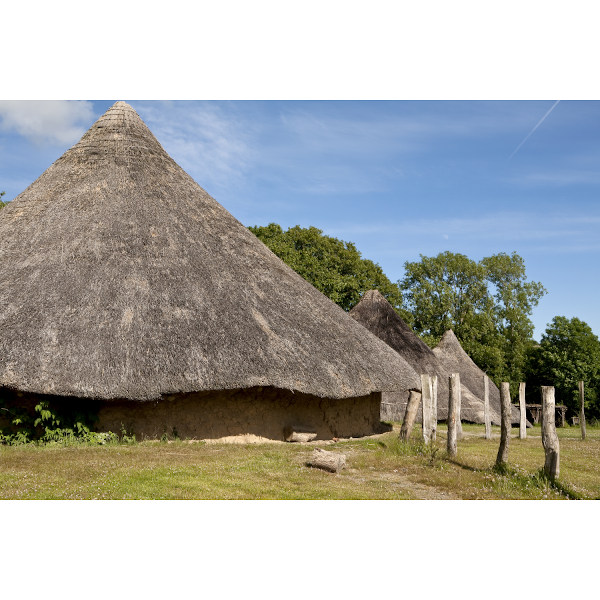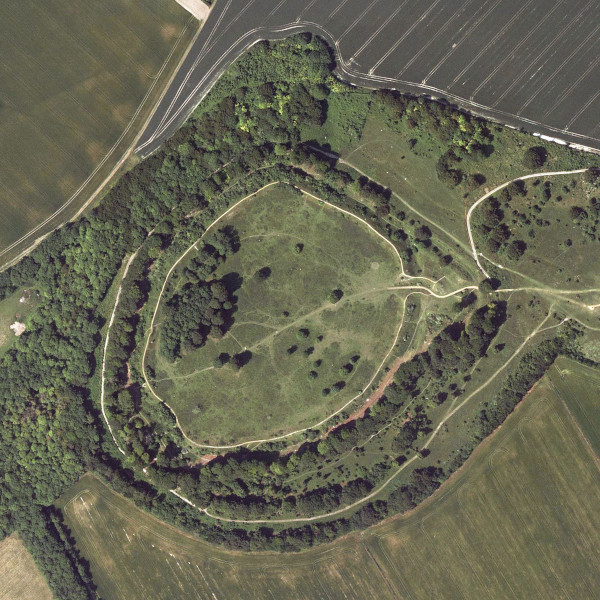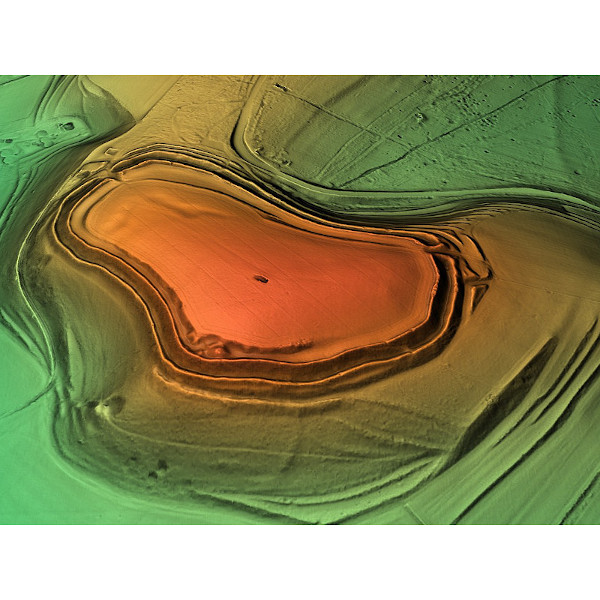DNA spotlight
Hillforts of Britain
Celtic hillforts were much more than simply fortifications. Referred to oppidae by the Romans,they were fortified town centers which would form the center of a Celtic community. Unlike a castle they had no keep - but they could have quite elaborate defensive structures. The walled interior space could fit upwards of 50 football pitches. Shown in this video is the hillfort of Cadbury Castle located in Somerset. This particular site is exciting as it is associated with King Arthurs legendary court at Camelot. The hillfort had been constructed originally in the Bronze Age and extended use throughout the Iron Age and past the Roman Era until around 580 AD.

The Celtic tribes lived in round houses within the hillforts made with thatched roofs of straw or heather. The walls would be constructed from local materials - either woven wood or straw covered with mud above for retaining warmth. These houses also notably had no windows. Fire would be lit in the middle and used for cooking and heating - a small hole in the roof would allow smoke to escape. Animals would also be housed in these buildings during winter or during conflicts. This image is from an iron age hill fort located in Pembrokeshire Wales where you can visit these roundhouses recreated on their original location.

The Danebury hillfort shown here was inhabited by several hundred people. There was a set of massive gates located on the right of the image which would be closed when the villagers were under attack. At Danebury several sections had been found to be burned down at various times evidencing violent conflicts. Remnants of slings, javelins, spears and iron age swords were found at the site. The ramparts surrounding the oppodum were dug out with small tools. The chalky ground enabled large pits to be dug which could store grain for up to a year. Also noteworthy is a chondrite meteorite found during excavation of the site.

Battlesbury Camp located in Wiltshire was built following the natural countours of the hill making it inaccessible from the west and northeast sides. It was named after a battle supposedly fought on the hill. This hillfort has triple ditches and ramparts enclosing about 23.5 acres of space. Remains found at the site include a chariot wheel, pottery, carpenter tools, whetstones, slings and other weapons. One of the skeletons was found with a small ring which had been worn as an amulet. A group of graves was uncovered outside the east entrance which is thought to be war burials from the Roman conquest.
Sample: Late Iron Age Hillfort South Cadbury Somerset Britain
- Sample ID: I11995
- Year: 570 BC
- Sex: Female
- Location: 51.0128,-2.3152
Sample: Late Iron Age Hillfort South Cadbury Somerset Britain
- Sample ID: I21302
- Year: 35 AD
- Sex: Male
- Location: 51.0128,-2.3152
Sample: Late Iron Age Hillfort South Cadbury Somerset Britain
- Sample ID: I21303
- Year: 35 AD
- Sex: Female
- Location: 51.0128,-2.3152
Sample: Iron Age Hillfort Battlesbury Bowl England
- Sample ID: I21307
- Year: 59 BC
- Sex: Male
- Location: 51.217744,-2.136648
Sample: Iron Age Hillfort Battlesbury Bowl England
- Sample ID: I21308
- Year: 59 BC
- Sex: Male
- Location: 51.217744,-2.136648
Sample: Iron Age Hillfort Battlesbury Bowl England
- Sample ID: I21309
- Year: 57 BC
- Sex: Male
- Location: 51.217744,-2.136648
Sample: Roman Era Hillfort Battlesbury Bowl England
- Sample ID: I21310
- Year: 300 AD
- Sex: Female
- Location: 51.217744,-2.136648
Sample: Iron Age Hillfort Battlesbury Bowl England
- Sample ID: I21311
- Year: 180 BC
- Sex: Female
- Location: 51.217744,-2.136648
Sample: Celtic Briton Hillfort Danebury Hampshire England
- Sample ID: I16612
- Year: 397 BC
- Sex: Female
- Location: 51.138291,-1.53093
Sample: Celtic Briton Hillfort Danebury Hampshire England
- Sample ID: I16613
- Year: 200 BC
- Sex: Male
- Location: 51.138291,-1.53093
Sample: Celtic Briton Hillfort Danebury Hampshire England
- Sample ID: I17263
- Year: 52 BC
- Sex: Female
- Location: 51.138291,-1.53093
Sample: Celtic Briton Hillfort Danebury Hampshire England
- Sample ID: I17264
- Year: 60 BC
- Sex: Male
- Location: 51.138291,-1.53093
Sample: Celtic Briton Hillfort Danebury Hampshire England
- Sample ID: I17266
- Year: 60 BC
- Sex: Female
- Location: 51.138291,-1.53093
Sample: Celtic Briton Hillfort Danebury Hampshire England
- Sample ID: I17267
- Year: 59 BC
- Sex: Female
- Location: 51.138291,-1.53093
Sample: Celtic Briton Hillfort Danebury Hampshire England
- Sample ID: I20988
- Year: 59 BC
- Sex: Male
- Location: 51.138291,-1.53093
Sample: Celtic Briton Hillfort Danebury Hampshire England
- Sample ID: I20989
- Year: 59 BC
- Sex: Male
- Location: 51.138291,-1.53093
Sample: Celtic Briton Hillfort Danebury Hampshire England
- Sample ID: I20990
- Year: 171 BC
- Sex: Female
- Location: 51.138291,-1.53093



